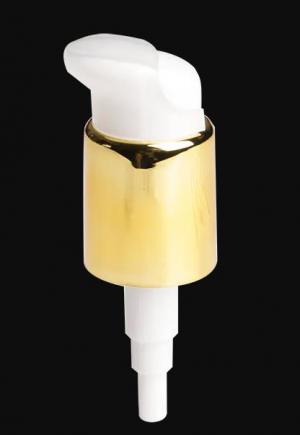Guidelines For Breast Plastic Pump Head Cleaning
Body
Whether you’re returning to work after maternity leave, building up your freezer supply or you’re an “exclusive pumper,” it’s hard to escape pumping for the breastfeeding mom. You’ve probably struggled to figure out which plastic pump head to use. And recently, the Centers for Disease Control and Prevention (CDC) changed its recommendations on breast pump cleaning and how to store your breast milk safely for your newborn.
First off, let’s address the “why” behind this. It’s NOT because doctors like to make life harder for moms and get everyone to wash their hands and equipment a thousand times a day. Your baby’s immune system – especially for those guys and gals less than 6-months-old – isn’t robust enough to handle some of the bacteria we encounter in our day-to-day lives. The CDC changed its recommendations after an infant died from a common bacteria found in our kitchen sinks. While these occurrences are rare, they do happen. None of us want your child to be put in harm’s way.
Guidelines for breast pump cleaning
Let’s address the actual cleaning now. Before you unwrap all that plastic, you want to have a large bowl and a bottle or scrub brush that you’re going to dedicate to pump and bottle parts only. This is necessary to limit the types of bacteria that may come in contact with your breast pump equipment.
First use:
Wash all pump and bottle parts (except tubing) in hot and soapy water in your special bowl and rinse with hot water. It doesn’t matter what type of soap you use.
Sterilize the parts via your dishwasher, microwave sterilizer or by placing them in a clean pot of boiling water for 10 minutes per your particular equipment’s instructions.
Clean after each use (as soon as possible):
Wash all parts (except tubing) in hot and soapy water using your dedicated scrub brush and wash bowl. Only wipe down the outside of the tubing and throw it away if you see any traces of mold growing on it.
Rinse under running water.
Air dry completely. Never use a dish cloth to pat dry as that may transfer bacteria. Use a clean paper towel instead. If you see moisture in your tubing, attach the tubing to the pump only and run for a few minutes until the moisture is gone.
Or
If your parts allow it, run them through the dishwasher and use the hot water/heat cycle.
Wash your hands before removing the parts.
Air dry completely.
Sanitize your equipment at least once a day (The CDC recommends this especially for infants who are less than 3-months-old, were born prematurely or have weakened immune systems.)
Follow cleaning instructions outlined above.
Sanitize via steam (microwave or your countertop device) per instructions or boil for 5 minutes
Wash your hands before air drying.
"What about real life?" I hear someone ask. I get it, Mama. I was lucky enough to pump for a year with my son while at work and am figuring it out again right now with my 3-month-old daughter. This is a lot! How can I save time?
I know what you're really asking about is the old trick of “store the pump parts in a Ziploc in the fridge.”
Although the CDC didn't address this particular question in its guidelines, the decision to store breast pump equipment in a plastic bag in the fridge comes down to your comfort level with the risks associated with this practice. The problem is, in theory, bacteria could transfer to your pump parts and come in contact with your breast milk, which provides a favorable environment for the bacteria to grow. Refrigeration slows down their growth, but doesn't eliminate it completely. While it’s a theory, and it’s probably a low risk – especially for older healthy babies less than 6-months-old – it's still a risk.
So what should you do? As a breastfeeding mom, I bring two sets of pump parts to work (your insurance can help pay for replacement parts too!) and I have a wash basin and scrub brush I use after each session. Then, I let the parts air dry on my desk so that everything is dry by the third round. I take my basin and brush home to run in my dishwasher each week. If I run out of time to wash it in the morning, then I wash AND sterilize the parts using microwave steamer bags during my lunch hour.
When I get home every evening, I wash and sterilize everything so it’s dry and ready to go the next morning. Yes, it’s a lot of work. Maybe you understand me when I say, “pumping isn’t my favorite thing.” You obviously can have more pump “sets” at work to get away with washing less, but that starts to get cost prohibitive for some people. My heart goes out to the exclusive pumpers in the audience, but we don’t have a better AND safer solution at this time.
Well, what about breast milk storage? The CDC now says it’s safe to keep milk up to 2 hours after an unfinished feed. I hate throwing out milk. It makes me so mad! You want to store your milk in the coldest part of the fridge/freezer (near the back, not by the door) as the temperature is more stable there. Here’s a handy chart from the CDC’s website that you can print off and stick up on the fridge for when you’re pulling out bags at 2 a.m. and trying to remember the rules in a sleep-deprived haze.
As a professional trigger sprayer factory,we accept all kinds of window hardware orders, welcome to consult.












Comments